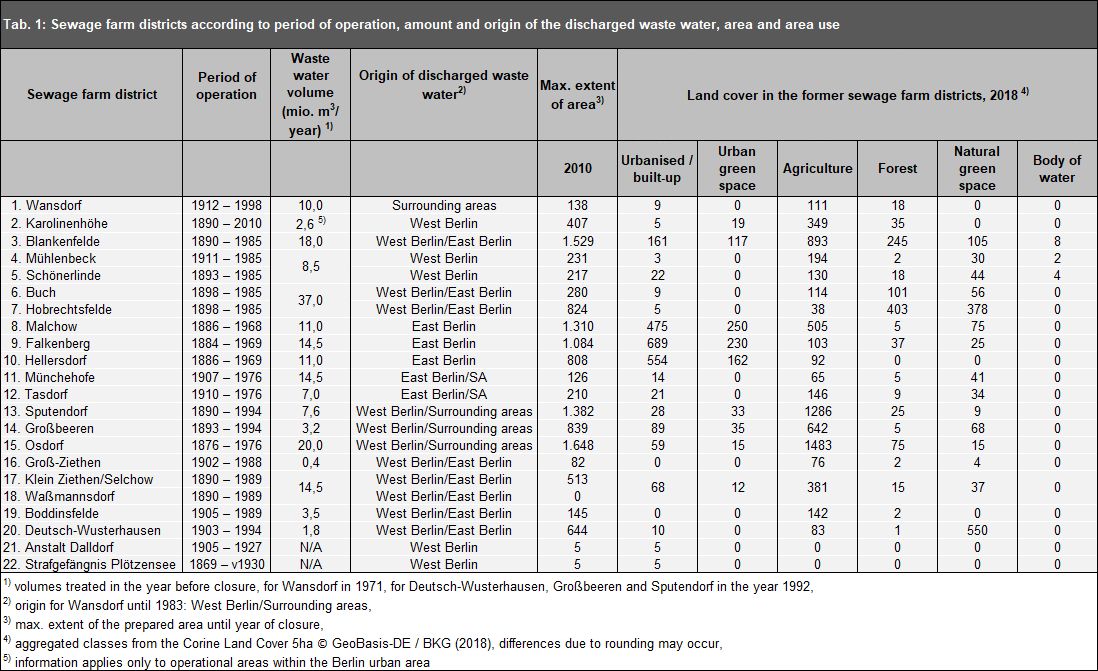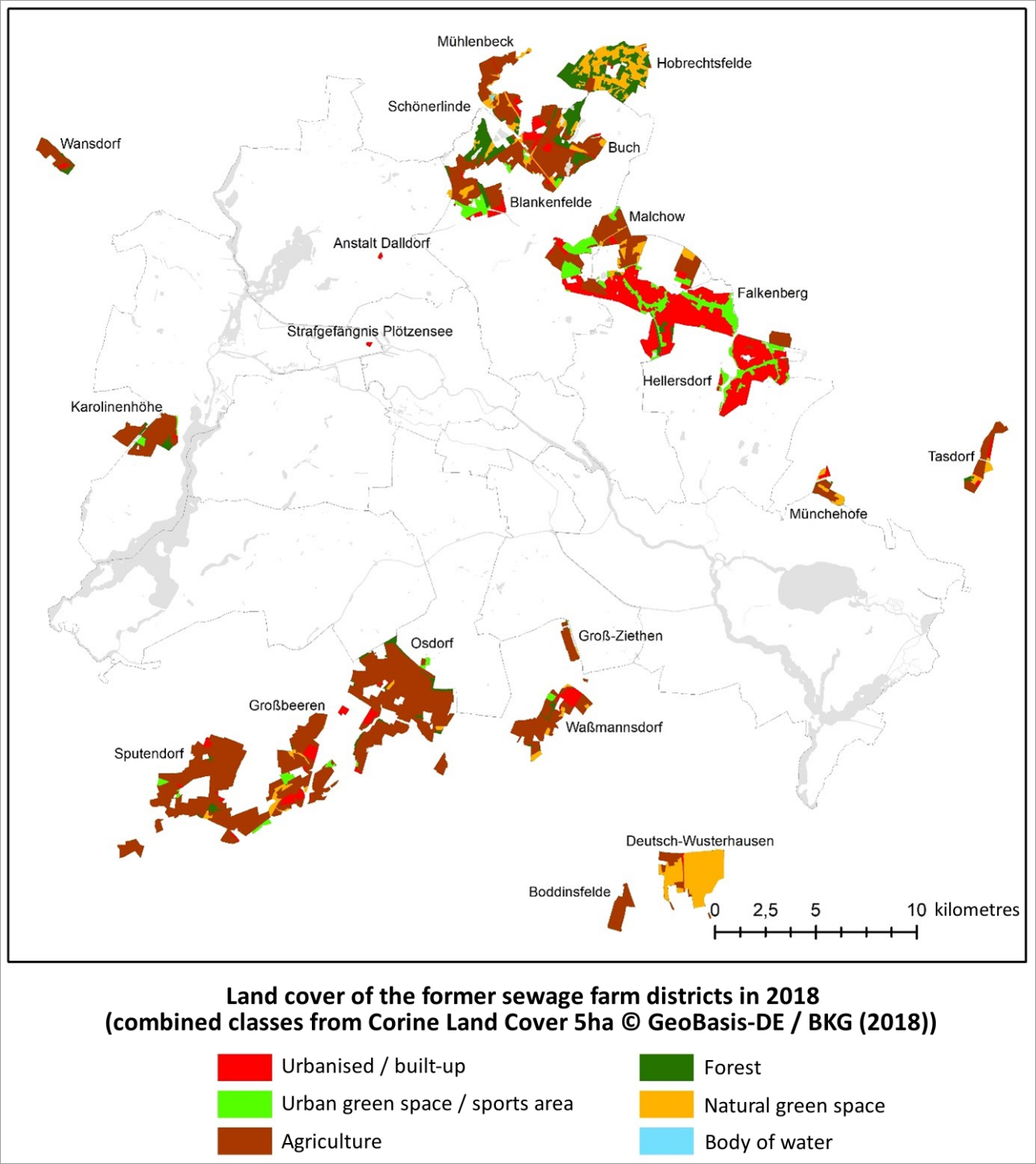Use of Sewage Farms since 1874
Osdorf Manor was bought by the city of Berlin in 1874 and used as the first sewage farm. The pressure pipeline and the Osdorf sewage farm were completed and put into operation in 1876. A total of 20 sewage farm districts and two smaller sites used for field treatment of sewage were put into operation (cf. Tab. 1). The maximum of about 12,500 ha of prepared area was reached around 1928.
There have been increasingly severe problems with sewage farms since the 1920’s. Agricultural yields were high at the beginning, but then dropped considerably. Too frequent treatment cycles caused soil surfaces to be muddied by sedimented effluent contents. This impaired the aeration balance. Imbalances in the nutrient balance and the increasing pollution of the soil led to yield reductions of crops. This “field exhaustion” was met by attempts to aerate the soil with regular soil processings and with structural improvement measures such as spreading lime and animal dung. But it became apparent that the yield capability of the soil could only be maintained by lowering the amounts of sewage water treated.
There was an intensification of agriculture after 1945. More and more land was consumed for the cultivation of root crops and cereals. Changing production cycles reduced the time available for treatment for these locations, so that less sewage water could be processed. An attempt was made to offset these losses in capacity by a more intensive use of the remaining grassland sites.
The East Berlin waterworks and sewage water system continued to use the majority of sewage farms after the Berlin Wall was built in 1961. The Berlin Waterworks (BWB) had continued to use part of the Karolinenhöhe sewage farm. A large portion of the southern sewage farms had been used by the city of Potsdam WAB since the 1960’s. Sewage water from West Berlin continued to be handled at sewage farms in East Berlin and vicinity (cf. Tab. 1) in spite of separate administrations. The enlargement of the Nord sewage treatment plant in Schönerlinde for the improvement of water quality of the Panke, the Tegeler Fließ and the Nordgraben was financially supported by West Berlin.


